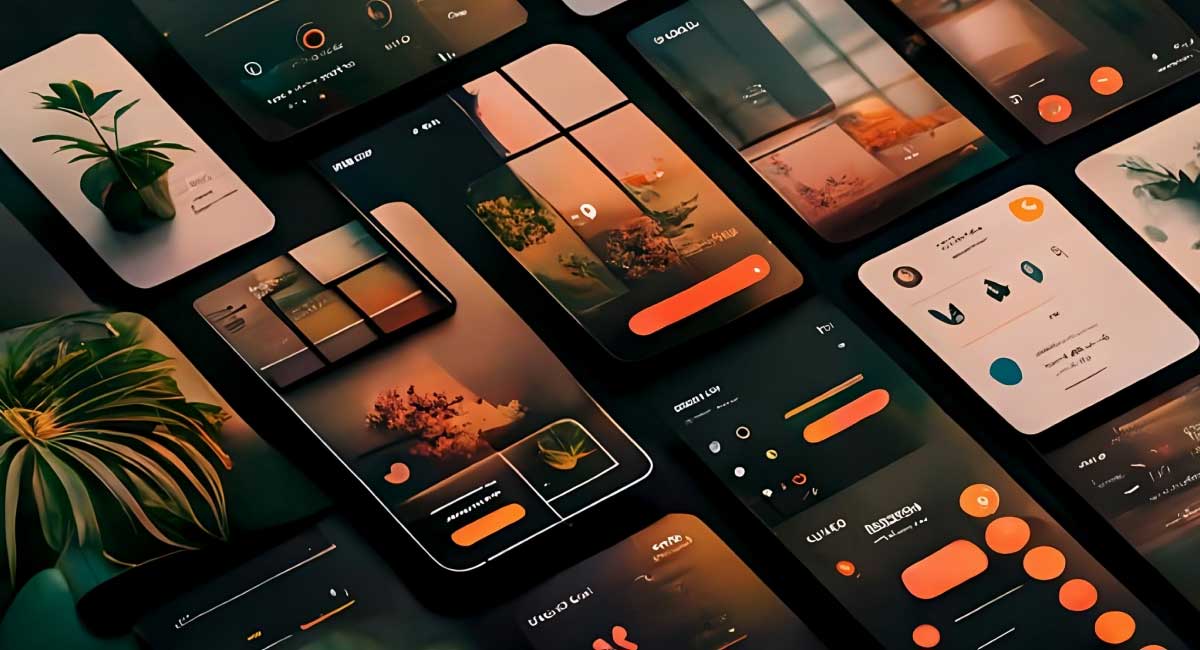In an era where smartphones are an extension of ourselves, the importance of mobile UX/UI design has skyrocketed. It’s not just about making apps look good—it’s about creating a seamless, intuitive user experience that engages and retains users. With millions of apps in the app stores, standing out requires innovative ideas and exceptional mobile UX/UI design. This guide delves into the essence of mobile UI and UX design, outlines best practices, showcases examples, and discusses how to harness these elements to create captivating mobile experiences.
It also shares a UX/UI design bootcamp professionals and team leaders can leverage to learn the latest skills and tools required to create the best mobile UI and UX designs.
What Is Mobile UI Design?
Mobile User Interface (UI) design refers to the visual elements of a mobile application or website. It encompasses everything the user interacts with—the buttons, text, images, sliders, and entry fields. The primary goal of mobile UI design is to offer a visually appealing and interactive environment that is intuitive and enjoyable. Good mobile UI design is not just about aesthetics; it’s about creating an interface that is accessible, user-friendly, and conducive to achieving the app’s goals.
Key components of mobile UI design include:
- Layout: The arrangement of elements on a screen. It must consider the limited screen size and how users interact with their devices.
- Typography: The art of arranging text. It plays a crucial role in readability and user engagement.
- Color Scheme: Colors can evoke emotions and convey messages. Choosing the right palette can enhance user experience and guide user behavior.
- Interactive Elements: Buttons, gestures, and animations that make the app interactive and fun to use.
What is Mobile UX Design?
While UI focuses on the look and feel, User Experience (UX) design is all about the user’s overall experience when interacting with an app or website. It considers the app’s usability, efficiency, and value. A stellar UX goes beyond just using the app—it encompasses the before, during, and after, ensuring that users find value in what you’re offering, leading to satisfaction and loyalty.
Mobile UX design involves:
- Usability: How easy and intuitive the app is to use.
- Information Architecture: Organizing content so users can easily navigate and find what they need.
- Interaction Design: Designing the app’s interactive elements in a way that feels natural to the user.
- User Research: Understanding the target audience, their needs, preferences, and pain points.
Mobile UX/UI Design Best Practices
Adhering to best practices in mobile UX/UI design is essential for creating successful mobile applications. Here are vital guidelines:
- Simplicity: Keep the interface simple and uncluttered. Users should feel free from too many options or unnecessary information.
- Consistency: Ensure consistency across all UI elements, including fonts, colors, button styles, and terminology. Consistency reduces the learning curve and enhances usability.
- Accessibility: Design for all users, including those with disabilities. This means considering text sizes, color contrast, and voice commands.
- Feedback: Provide immediate feedback for user actions. If a user taps a button, animate the button, or display a loading indicator for longer processes.
- Optimize for Touch: Design elements should be easily tappable and appropriately sized for fingers, not mouse cursors.
- Test and Iterate: Conduct user testing to gather feedback and identify areas for improvement. Continuously iterate based on user feedback.
Mobile UX/UI Design Examples
Let’s examine some examples of excellent mobile UX/UI design:
- Spotify: The music streaming app is renowned for its intuitive navigation and personalized experience. Its bold colors, straightforward typography, and swipe gestures create an enjoyable user experience.
- Airbnb: Airbnb’s app stands out for its seamless booking process, high-quality images, and easy-to-navigate interface. The design feels personal and intuitive, making planning a trip almost as enjoyable as the trip itself.
- Duolingo: Duolingo uses gamification to make learning a new language fun and engaging. The app is known for its friendly interface, playful animations, and explicit progress tracking.
These examples showcase how mobile UX/UI design can create memorable, user-friendly experiences that engage and retain users.
Harness the Power of Mobile UX/UI Design By Upskilling Online
The power of mobile UX/UI design in shaping the digital experience cannot be overstated. It’s the bridge between the user and the technology, where every pixel and every interaction matter. By understanding and implementing mobile UI and UX design principles and best practices, designers and developers can create apps that meet user needs and exceed their expectations. Remember, in the competitive digital marketplace, your mobile UI/UX design quality can be the difference between an app’s success and its failure.
Aim to design with the user in mind, and you’ll create not just apps but experiences that users will love and remember. To gain the skills and practical experience working with the tools to develop effective mobile UI and UX designs, consider enrolling in this comprehensive UX/UI program. Through hands-on projects, you will create mobile app designs for iOS, Android, and more.






